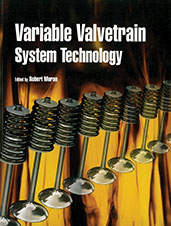Technical Paper
ɸ-Sensitivity Evaluation of n-Butanol and Iso-Butanol Blends with Surrogate Gasoline
2023-08-28
2023-24-0089
Using renewable fuels is a reliable approach for decarbonization of combustion engines. iso-Butanol and n-butanol are known as longer chain alcohols and have the potential of being used as gasoline substitute or a renewable fraction of gasoline. The combustion behavior of renewable fuels in modern combustion engines and advanced combustion concepts is not well understood yet. Low-temperature combustion (LTC) is a concept that is a basis for some of the low emissions-high efficiency combustion technologies. Fuel ɸ-sensitivity is known as a key factor to be considered for tailoring fuels for these engines. The Lund ɸ-sensitivity method is an empirical test method for evaluation of the ɸ-sensitivity of liquid fuels and evaluate fuel behavior in thermal. iso-Butanol and n-butanol are two alcohols which like other alcohol exhibit nonlinear behavior when blended with (surrogate) gasoline in terms of RON and MON.

